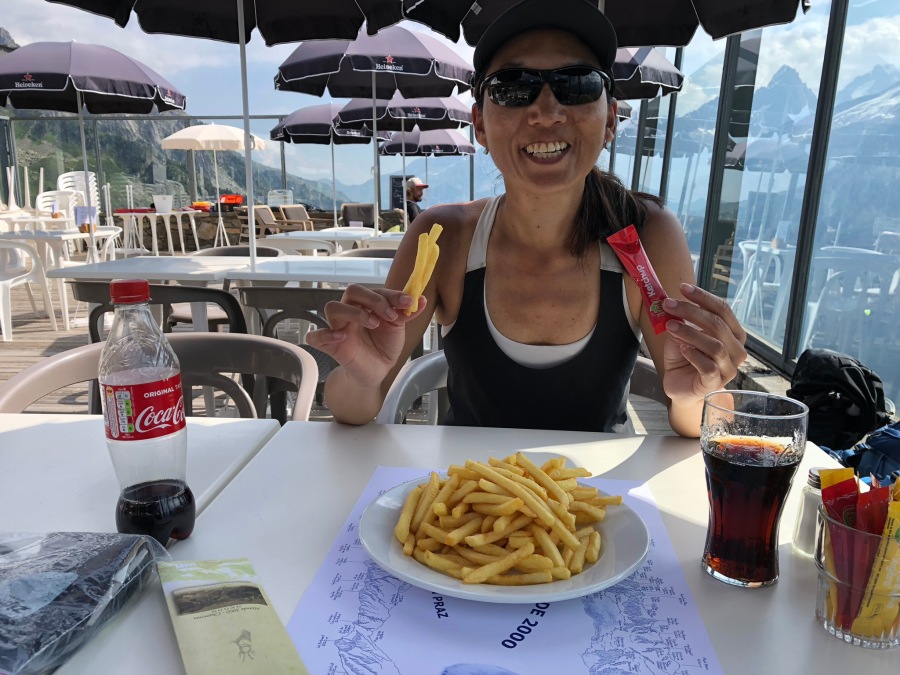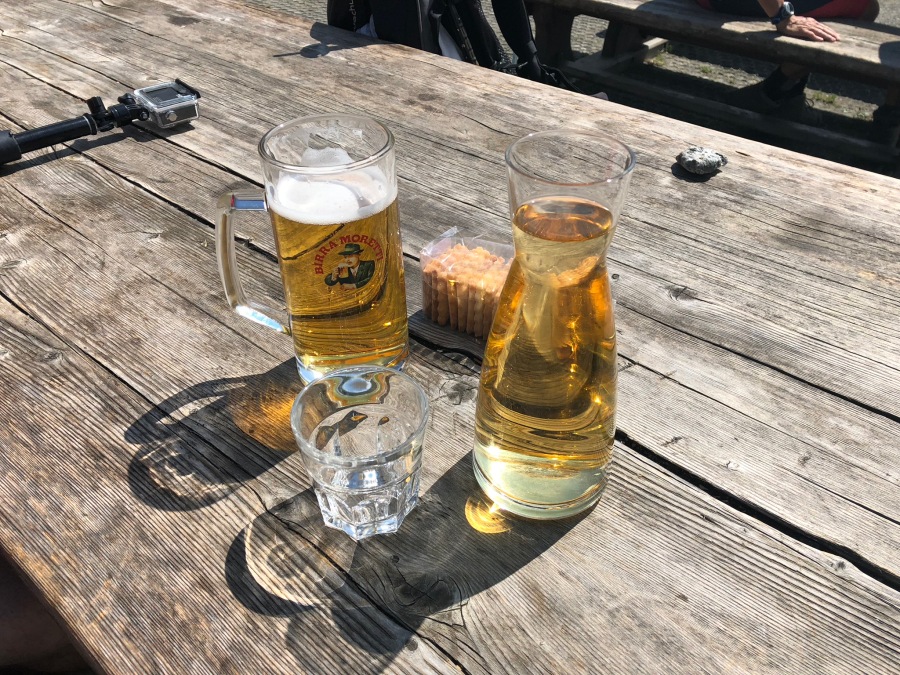The first thing you should do is get yourself a guide book. We recommend (as does just about everyone) the definitive guide written by Kev Reynolds and published by Cicerone. It is clear, concise, easily understood and contains easy to comprehend maps.
We used Kev’s book exclusively. In retrospect we should have purchased a SECOND guide book; it is best to have two takes on something. We advise everyone do the same. You don’t have to bring both books with you, but you SHOULD bring at least one guide.
A map is not absolutely essential but comes in handy. There were a couple of times when Brian readily admits he could have used one. Note that maps are available all over Chamonix, Courmayeur and most of the major towns.
Next decide how many days to spend and what your route will be. For ease of planning, we recommend the eleven-day option described by Kev Reynolds in the counter-clockwise direction. We also recommend taking one rest day, preferably at Courmayeur. But we met people doing all sorts of itineraries…eight days, six days, clockwise, counterclockwise, starting in Courmayeur, starting in La Fouly, starting in Trient…there are many, many options. Your start and end point, and the number of days you have available to hike, will determine the limits of your trip.
Note that the fastest most hikers can reasonably do the full circuit is eight days, and that is with short cuts. If you have less than nine days to work with, our recommendation is to do part(s) of the route.
If you have only a few days, the best sections scenically are those above Chamonix and either side of Courmayeur. Another advantage to these areas is cable car connections allow you to zip down to the valleys in a hurry.
If you have to leave out something, the least interesting sections are everything from Les Houches up to where the roads end in Les Contamines, and basically all of Switzerland.
Next, decide your plan of attack for accommodations. This will be the most complex part of the planning.
One of the best things about the hike – the fact you can sleep in a bed with a roof over your head, maybe take a shower, and get dinner and breakfast – is also one of the things that makes it such a severe logistical challenge. Namely…making all the reservations needed to have that bed, roof, shower and breakfast every day for many days at different locations.

At one time this was VERY difficult because there was no site where you could do all the bookings. This has improved somewhat…there is STILL no one site where you can do everything, but you can now do most things in one place.
Sylvia and I used the montourdumontblanc website to make MOST of our bookings. This seems to be the most popular way to do the tour right now.
http://www.montourdumontblanc.com/uk/index.aspx
(you can also reach this site at this link…one takes you to the other)
http://www.autourdumontblanc.com/en/
Of the eleven different accommodations we stayed at on the tour, MOST of them were bookable here. A few were not; I believe the Elisabetta, Bonati and Lac Blanc were the three that were not, and two of those we booked by emailing directly. One we had to call directly; Sylvia made the call and we can’t remember which one, but Brian thinks it was the Lac Blanc.
We booked our hotels in Chamonix and Courmayeur directly through Expedia.
We generally had a good experience with the Montour website. The site does charge SOME fee (which it is very coy about, doesn’t tell you anything till you are ready to book.) Or you could skip the fee by simply doing all the bookings in one place; it’s possible with email and Google Translate. But keeping track of it all is the sore spot.
Many guides and advice sites recommend not booking too far ahead, but rather hiking with an open itinerary and booking the night before you arrive, by calling ahead or having the refuge staff call ahead. The plus side of doing this is a very flexible itinerary that can easily be adjusted to the circumstances. The down side is that the tour is VERY popular now and these places will fill up. Especially the ‘choke point’ refuges in areas where there is no other place for miles. These are the Bonhomme, Elisabetta and Bonati (and if the Lac Blanc is closed, the La Flegere as well.)
Sylvia and I chose to book everything ahead, accepting the risks of a rigid, point to point itinerary over the hassle of trying to book on the fly in a foreign country. Brian’s bungled attempts to learn Tarzan French contributed heavily to this decision; he wasn’t confident enough to be able to attempt a seat of the pants plan.

